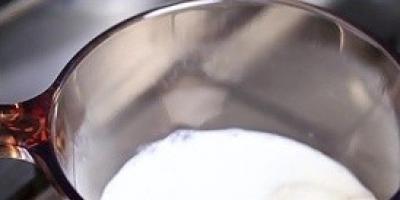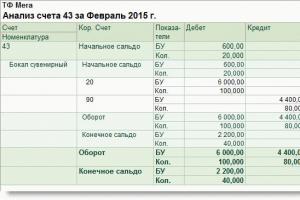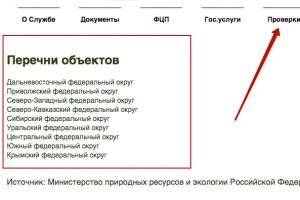Our units operate on solid fuel and are designed for wood heating of cottages and private country houses low-rise. The area of wood-heated premises ranges from 80 to 320 square meters.
The design of the wood-burning device allows the additional use of electric heating of the coolant. For this purpose, a threaded coupling for the heating element is provided on the rear or side wall of the housing.
This is a useful option for wood-burning boilers, allowing you to avoid temperature changes in the heating system during breaks between fires. When using water as a coolant, electric heating will protect the system from freezing in the event long downtime in the cold season.
A tubular electric heater with a control panel will automate the process of controlling the unit and expands the functionality of a simple wood-burning boiler.
Installation of heating elements
The heating element is not included in the sale of the wood-burning boiler, but is an option that must be purchased separately. For low-power wood-fired combination boilers up to 18 kW, a 1-3 kW tubular electric heater is suitable; for 18-32 kW units, a heater with a rated power of 6 to 9 kW is recommended.
A control panel with a thermostat automatically maintains the temperature in a given range by turning the electric heater on and off. The unit is equipped with boil protection and a light signal.
Heating elements with a power of 1 to 3 kW are single-phase and powered from household electrical network with a voltage of 220 V, and heating elements with a power of 6 to 9 kW are three-phase and powered from a network with a voltage of 220/380 V. When installing the unit, connect the ground.
Nowadays, you can increasingly see combinations that are universal for a private home. heating boilers, operating simultaneously on two types of fuel. Combining firewood and electricity is a pretty smart solution; such a boiler is quite reliable, compact and practical. And if there is a power outage or lack of fuel, you will not experience discomfort from the cold or lack of hot water during the cold period.
Modern heating boilers use solid fuel, combining it with both gas and electricity, which is more relevant for consumers. When purchasing a heating boiler that runs on both wood and electricity, several problems are solved in one fell swoop:
- For heating, two alternative energy sources relative to natural gas are used.
- The issue of cooling the premises is resolved in the case when everything in the firebox has completely burned out, and a new portion of fuel has not yet been loaded.
- Makes it more comfortable water heating, since you no longer need to get up in the middle of the night and go to the boiler room to load fuel.
Combined electro wood boilers heating systems of the latest generation with a large firebox are manufactured so that switching to electric heating occurred automatically when the water temperature in the boiler drops below a certain level. Naturally reverse transition to combustion solid fuel occurs through external actions.

Electric wood boiler design
Externally, a combined TT boiler with wood and electricity is in no way different from a conventional solid fuel unit. In essence, this is the same wood heating boiler, the only difference is that it has a heating element installed in the heat exchanger. Another important difference from the standard configuration is the presence of a water jacket.
One of the walls of such a boiler is made by cold stamping and has a complex configuration. Heating elements are installed between the walls of the jacket and there is a special contact hole to which the electrical wiring contacts are connected.
The design of a heater of this type is similar in design to a standard solid fuel boiler, which consists of the following main elements:
- firebox (combustion chamber), place for loading solid fuel;
- from the outside it is washed by the coolant, which is located inside the water jacket;
- water-tube or fire-tube heat exchanger, where combustion products most heat is transferred to water before being released into the chimney;
- at the bottom of the firebox there is a grate, and under it there is an ash chamber;
- firebox and ash pan in front equipped with doors;
- to regulate the combustion intensity there is a mechanical draft regulator or an air blower fan (if not manual control air damper).
Domestic combined heating boilers are distinguished by the design of a water jacket, where there is space for installing a block of tubular electric heaters - heating elements. Their contacts are brought out and connected to the control panel using an electrical cable, and the heating part is immersed in the coolant.

How does a combination boiler work?
The operating principle of a solid fuel heater that has electric heaters installed is as follows:
- Ignition and heating of the boiler are carried out as usual. When burning solid fuel, the temperature of the coolant is maintained using a mechanical thermostat or fan together with a sensor, and the heating elements are turned off at this time.
- After the contents of the fuel chamber have burned, the temperature of the coolant in the system gradually drops to certain value, upon reaching which the heating element (one or more) is turned on based on the signal from the temperature sensor. At this moment, the boiler begins to operate on electricity.
- After the next portion of firewood or coal is loaded, the water in the system begins to be heated from the side of the combustion chamber, the electrical part is automatically turned off until the temperature of the coolant drops to a certain value.
- Electrical equipment is auxiliary.
- The heater control unit is used to maintain a certain water temperature based on the readings of the air or water sensor.
Continuous heating of water is ensured by switching from one mode to another, which ensures comfortable conditions in a private house.
Advantages of universal boilers
After installing a wood-electricity combined heating boiler, you will receive the following bonuses:
- Versatility. You will have a choice of which of the two fuels to use and when.
- Due to the built-in heating elements, the coolant will retain set temperature even after the fuel is given it burns in the loading chamber. This will maintain a comfortable temperature inside the room, and in case of your absence for a long time, it will prevent pipes and radiators from freezing.
- Comfort. Maintaining the temperature using electricity is of great service, helping to get rid of the problem of night trips to reload fuel into the combustion chamber.
- If electricity metering is done according to a multi-tariff scheme, then in addition to convenience, you can also save on the night operation of heating elements.
- A well thought out device. The heat is distributed in such a way that thermal energy losses are kept to a minimum, making the boilers quite efficient.
- Long period of operation. If properly operated, such a boiler can serve you for at least 20 years.
- Autonomy. There is no need to constantly monitor the process - for this purpose the unit is equipped with automation. Especially in the case of operation from electricity, the operating mode using a heating element is limited to an uninterrupted supply of electricity.
- You can find models with pre-built pipes in order to be able to connect a “warm floor” system.
Heating combi boilers, which operate on both wood and electricity, cope with their task even in low-power mode.

Disadvantages of combined units
Electric heaters for a universal boiler only require maintaining the temperature of the water in the system; they cannot completely replace the combustion of solid fuel. The reason for this is low power block of heating elements, which are installed by manufacturers on solid fuel boilers. This feature, unfortunately, is one of the serious disadvantages of combined boilers for heating a private house using wood.
Heating a private home using a combination boiler that runs on both electricity and firewood has other disadvantages.
- The useful volume of the loading chamber is taken away by the heater block, which significantly affects the combustion duration per load.
- The operation of the device directly depends on the stability of the power supply.
- The cost of combination boilers is much higher compared to classic options solid fuel boilers.
- The efficiency of heating elements during operation drops by 2-5% due to the air flow that passes through the cooled firebox. The reason for this is the constant draft in the chimney; it forces air from the rooms to leave through the chimney and thereby cools the water jacket of the heater.
Don't forget one more important detail. As in the case of a classic solid fuel boiler, a combined wood-electric heating boiler must be connected to water heating through a three-way valve, as shown in the diagram below. A small circulation circuit is necessary to protect the firebox from the negative effects of condensation during lighting.
In order to prevent the walls of the combustion chamber from becoming covered with condensation when the temperature changes, the solid fuel boiler must be connected according to the standard diagram with a three-way valve:

If the power of the heating elements is not enough to heat the coolant to a temperature of +55 ° C or more, then condensation will never appear in the firebox of the combined boiler during ignition, and a unit with a three-way mixing valve will not be needed. But as practice shows, a small circulation circuit is nevertheless necessary, at least in the event of a power outage or a breakdown of one of the heating elements.
How to choose a wood-electric boiler?
Manufacturers offer combined heating boilers that operate on both wood and electricity, which vary in performance, power and configuration. When purchasing this equipment, you need to pay attention to the following points:
- Power – this parameter depends on what type of fuel is used. It is necessary to determine in advance the main type of fuel for the purchased device.
- Dimensions of the combustion chamber - its volume will indicate how often it will be necessary to load fuel.
- Quietness - installation special valve will ensure quiet operation of the unit.
- Number of circuits - some models heat water only using heating elements.
- The most economical models are those in which the coil is built into the combustion chamber.
- Heat exchanger. It can be made from both steel and cast iron. Cast iron ones are not so susceptible to corrosion, they give off heat longer, although they take longer to heat up, they also have quite a significant weight, and with sudden temperature changes they can crack. Steel has less resistance to corrosion and oxidation, but is lighter and more resistant to temperature changes.
- Grate bars. The material used can be very different. It can be either cast iron or ceramics. Cast iron has higher heat resistance and is suitable for burning any solid fuel. Cellular cast iron grates with ceramic coating are suitable for bulk materials, the combustion of which consumes a larger amount of oxygen.
- Weight and dimensions of the unit. Due to the large dimensions, it may be necessary to reinforce the surface area where the unit will be installed with a concrete screed.
When choosing a boiler for heating a house, you need to correctly calculate the power of the device based on the parameters of the room area. This will indicate how much fuel consumption will be required. If the area of the house does not exceed 80 m2, then there is no need to buy a boiler whose capacity is designed to heat a house with an area of 400 m2. This may result in overexpenditure of budget funds both for the purchase of the unit and for its subsequent operation.
A wood-electric combination boiler is perhaps one of the most good decisions for heating a cottage or private home small area. In a cottage that has 2-3 floors, heating elements will only save the system from freezing. Combination boilers will help out if it is not possible to use a constant and reliable source of energy. In addition, these boilers will save quite a lot of money if you use more expensive fuel as a backup option.
To install such a boiler, it is better to use the services of a specialist who works in this profile. He will advise the device model that is most suitable for you and without unnecessary problems will install it based on the requirements of safety rules and technology requirements.
From year to year modern systems Autonomous heating systems are becoming increasingly popular among country property owners. For one reason or another, traditional gas heating units are rejected by owners of private houses (mainly due to the high cost and unavailability of gas) and are being replaced by universal combination boilers.
These are amazingly reliable, functional and productive devices, thanks to which you can provide heating for your home or any other property.
Combined heating boilers: electricity and wood as the main fuel
Currently, heating boilers using wood and electricity are in greatest demand among combined equipment. A feature of this technique, as can be seen from the name, is the simultaneous operation of both solid fuel (wood, wood waste) and electricity. This versatility is ensured by a unique, well-thought-out and quite practical design of the equipment.
By and large, heating boilers using wood and electricity differ from traditional solid fuel boilers only in the additional built-in heating element (installed in the heat exchanger tank). It should be noted that such heating equipment also uses an automation system that allows you to change the boiler power, operating modes, and also ensure switching between fuel types.

Equipment for heating systems: additional equipment and expanded functionality
A variety of combined heating boilers, gas, wood and electricity, are often equipped with special sensors and other systems, due to which the performance of the equipment is significantly increased. Such sensors allow equipment to automatically turn on electric heating elements, thereby ensuring continuous heating.
This multifunctionality is especially effective in cases where the power of the equipment in the combustion mode of firewood or other solid fuel is insufficient.
Any heating boiler using electricity and wood is also good because it copes excellently with low-power operating modes. The instructions for such equipment assume that even if the boiler operates irregularly, it will be able to effectively maintain a constant minimum temperature indoors, eliminating the possibility of freezing of the liquid in the heating system.
Design features of boilers
Any heating boiler using wood and electricity, as a rule, has a rather simple, but at the same time, well-thought-out design. Often, a firebox is installed at the bottom of the unit, into which any solid fuel is loaded, be it wood, coal or peat.
The heat released during fuel combustion heats the heat exchanger with liquid, which subsequently enters the heating system.

Heat source: wood - electricity in the house
If you switch the heat source to electric mode, the coolant in the system will be heated by heating elements. And even during low-power operation, it is electricity that allows you to automatically maintain a constant minimum temperature of the coolant.
Installation and operating conditions of combined boilers
Unlike traditional heating units, boilers using a combination of several types of energy require special conditions installation and maintenance. It is especially important to consider these requirements for the installation process if the work is done with your own hands.
To begin with, we should point out the fact that a special separate room must be allocated for such heating units in a private house. Also, it is necessary to provide a concrete pad for the unit, equip a chimney and a ventilation system. On our website you can see photos and videos of installed boilers in various houses.
Advice. If you are not sure about own strength– trust the implementation of everything installation work qualified specialists. Real craftsmen will complete the entire range of work in the shortest possible time, ensuring high quality and compliance with requirements and standards. In addition, you will have a guarantee for the work performed.

Advantages of boilers running on solid fuel and electricity
If we compare combined equipment for heating country houses with traditional gas or simple solid fuel boilers, their advantages become simply obvious:
- Availability and low price of fuel. Due to the possibility of working with solid fuel, it is possible to ensure the combustion of almost any waste from the wood processing industry, the cost of which is simply a pittance;
- Versatility. Due to the presence of heating elements in the design of heaters, it is possible to obtain heat from the boiler even in cases where it is not possible to use firewood;
- Economical. Wood and electricity are the most affordable types of fuel these days, and therefore you can save a lot on installing a combi boiler and heating your home. Savings are especially relevant in light of the regular rise in gas prices;
- Environmental friendliness and absence of harmful emissions from the heating system;
- Availability of automation systems and special programmers. Such equipment makes it possible for heating equipment to operate automatically when the owners are not in the house;

- High quality heating. Products from the woodworking industry, like electricity, emit a lot of heat, and therefore the coolant will be heated as quickly and efficiently as possible. In addition, there are no significant energy losses, since the combined equipment has a well-thought-out design;
- Duration of trouble-free operation.
Conclusion
Combined heating systems are an excellent choice for any private home. Fuel availability, reliability, versatility and high performance The units stand out favorably from the total number of heating boilers presented on the domestic market.
If there is no gas in the house, then it does not matter - you can heat it with firewood, purchased or chopped in the forest. In addition, solid fuel boilers can operate on other types of solid fuel. Also on sale are combined units connected to the electrical network. Heating boilers for private homes using wood and electricity are more convenient to use compared to their traditional counterparts. Let's take a look at what this equipment is, how it works and what its advantages are.
Features of wood and electric boilers
A traditional solid fuel boiler is a wood stove with a built-in heat exchanger that provides the heating system with hot coolant. Firewood is placed in its firebox, burning merrily and generating thermal energy, absorbed by the coil. And in order to always keep the house warm, it is necessary to add more logs to the firebox - even at night. That is, instead of sleeping, you will have to get up and stomp towards the insatiable unit.
Wood heating boilers cause inconvenience even during the day. The logs in them burn out very quickly. If you do not monitor the flame level, the heating will cool down and the house will become noticeably cooler. This problem can be solved in the following ways:
- Purchase of pyrolysis units and models with large fireboxes;
- Purchasing pellet boilers with automatic feeding fuel;
- Installation of a boiler that runs on wood and electricity.
The last option is the cheapest. Pyrolysis units are complex and high in cost; the same disadvantages are inherent in pellet samples. But boilers and stoves using wood and electricity have an affordable price.
An electric wood-burning boiler is a conventional solid fuel device that runs on wood. But as soon as the firewood in its interior runs out, and the temperature of the coolant drops below a given level, the heating element (or several heating elements at once) comes into play. It maintains the temperature in the circuit, preventing it from cooling down quickly.
Heating elements are responsible specifically for maintaining the temperature; they are not able to warm up houses only due to their power. They also allow the coolant to cool gradually, but they last for several hours.
Temperature control can be built-in or external - some models are equipped with built-in thermostats.
Solid fuel combination boilers are equipped with one or two heating elements of limited power. The power source for them is single-phase and three-phase networks(usually single-phase).
Advantages and disadvantages of boilers using wood and electricity
Boilers for heating with wood and electricity are characterized by the following advantages:
- Availability of support temperature regime– prevents the coolant from cooling too quickly;
- Balanced cost – the equipment is characterized by its low cost, which will be discussed in our review;
- No additional maintenance is required, as required by combined devices with liquid and gas burners.
By installing a heating boiler that runs on wood and electricity in your home, you won’t have to jump up at night to load a portion of firewood.
There are also traditional disadvantages - high power consumption and the need for durable electrical wiring.
Popular models
Let's see how to choose a wood-electricity combined heating boiler for home heating. The main parameter here is the power of the device. Usually 10 sq. m of heated area requires 1 kW of thermal energy. Also, don’t forget about a 15-20% reserve in case of cold winters.
Heating elements in boilers running on wood and electricity can be optional or built-in. In the first case, they will have to be purchased separately, and in the second, they are supplied as standard. It would be nice if there was already a thermostat on board to maintain the temperature - then you won’t have to buy it separately. You should also evaluate the power of the heating element used, since samples with a power of 8-9 kW and above operate from three-phase networks.

Here is a typical boiler using wood and electricity for heating a large house - up to 200 square meters. m. It is non-volatile, but comes with a pre-installed block of heating elements, the power of which is 9 kW. The model is single-circuit, designed for traditional floor installation. The combustion chamber is open; briquetted fuel, coal, firewood and other types of solid fuel are burned in it.
If you are considering buying this boiler, you will be making a bargain. After all, it can work not only on wood and electricity, but also on gas - for this you need to buy a plug-in gas-burner. The cost of this model in online stores varies between 22-28 thousand rubles.

Electro wood stoves for houses with water heating are in demand among those who are tired of freezing when the fire in the firebox goes out. Using the ZOTA Topol M20 model, you will have at your disposal a powerful heating device from a well-known brand. Its power is 20 kW, efficiency is 75%, control is mechanical. It is possible to operate from electricity, but for this you will have to purchase a block of heating elements for it. The boiler is omnivorous, it burns wood, coal and anthracite. Estimated cost for Russian market is about 36,000 rubles.

The GEFEST company produces not only gas and electric stoves known throughout Russia, but also heating boilers for private homes using wood and electricity. A typical example of this is the above model. It is made in a simple rectangular case, devoid of any hint of design. The power of the sample is 25 kW, the heated area is up to 250 sq. m. The efficiency is up to 82%, which is quite a high figure.
Despite its apparent simplicity, the GEPHAESTUS VPR KSTGV-25 boiler with wood and electricity is not at all as simple as it seems. The thing is that it is double-circuit - it gives heat and hot water. The performance of the DHW circuit is 8.5 l/min with a temperature change of 35 degrees. The primary heat exchanger is made of steel, the secondary one is made of copper. As soon as you get tired of wasting wood and electricity, you can switch the device to gas by purchasing an additional burner.

Who knows how to do good boilers, working equally well with wood and electricity are Siberian producers. The presented model has a power of up to 12 kW and can heat an area of up to 100 square meters. m, consuming up to 3.2 kg of fuel per hour. As soon as the firewood in the firebox runs out, the electric heater will turn on - it will maintain the temperature in the heating circuit and will not allow it to cool down until the next fuel load.
The boiler for wood and electricity Sibenergotherm Prometheus 12M-5 12 kW works not only with wood, but also with other types of fuel - coal and coal briquettes. Moreover, coal acts as the recommended fuel for this model. Separately, we are pleased with the high efficiency of the model, amounting to 84 kW. Its design also includes an air vent and safety valve. Heating elements for operation from the electrical network are purchased separately.

This boiler, which can operate on electricity and wood, is a combination boiler, because a gas burner is also connected to it. The power of the device is 16 kW, which is enough to heat houses up to 160 square meters. m. The fuel for this model is traditional firewood, coal and wood briquettes, as well as coal. The block of heating elements is already pre-installed, there is no need to purchase anything additional. The device is one of the most affordable, its average cost is about 24 thousand rubles. For this money, consumers get almost omnivorous equipment.

Some half a century ago, the concept of “ heating system"implied only one type of heaters - a wood-burning stove with a rough heat exchanger.
Today, there are many modern units, compact and safe, capable of extracting heat from other energy sources - gas, diesel fuel, electricity.
They are widely used in the private sector and are used for heating houses, cottages and even individual apartments in high-rise buildings.
Installation of a double-circuit gas boiler modern modification in a three-room apartment and connecting it to autonomous system heating will entail a significant reduction in utility bills.
In country houses automated heating equipment can simplify the process of heating a building, eliminating the need to control the degree of combustion of wood/coal and maintain a flame in the furnace firebox.
Natural gas is considered the cheapest energy source, but not all areas, especially dacha cooperatives, are gasified. And the only alternative to solid fuel in such settlements is electricity, which is why they have become widespread there. electric boilers heating.
But unfortunately, in our conditions, the power supply to objects of the third category, which include country houses and residential settlements, cannot be called stable. According to current legislation, the electricity supply organization has the right to turn off the electricity supply to these facilities for three days without warning.
And if any large-scale accident occurs that requires more time to restore the network, then the organization responsible for the power supply is obliged to notify residents of the planned time frame.
In any case, in winter time even a three-day outage can be fraught for a country or residential building - freezing and destruction of water-carrying communications, moisture condensation on the internal surfaces, building structures, which leads to rapid growth of mold fungi and damage to decorative finishes.
What to do in this situation? The best solution would be to install a combined boiler in the heating system that operates on both solid fuel and electricity.
Diagram and principle of operation of a combined boiler “electricity - wood”
Design
 Structurally, “electricity-wood” boilers resemble conventional solid fuel units equipped with a heat exchange tank.
Structurally, “electricity-wood” boilers resemble conventional solid fuel units equipped with a heat exchange tank.
The main difference from the latter is the presence of one or more tubular electric heaters built into the tank and a more complex automatic system management.
A combined boiler can be operated both in separate modes (solid fuel only or electricity only) and in combined mode.
For example, you heat country house firewood during the day. At night, the temperature drops and the electric heater automatically turns on, maintaining the set parameters.
Combination boiler structure
The design of heating equipment of the “electricity - wood” class requires the presence of the following mandatory elements:
- Frame. Made from sheet steel coated on the outside with heat-resistant paint.
- Firebox for solid fuel. Located at the bottom of the unit, under the tank.
- Chimney pipe. It is usually located at the top of the back of the device.
- Ash pit. It is separated from the firebox by means of a grate.
- There are four doors on the front surface of the boiler: furnace, blower, air and blasting.
- Also mandatory elements of combination boilers are protective, regulatory and control equipment: pressure gauge, gate lock, regulator, grounding bolt, heat limiter, temperature sensor, a drain pipe, pressure relief valve and others.

Specifications
To the main technical specifications combined boilers "electricity - firewood" include:
- thermal power of the unit when operating on solid fuel and from the mains;
- consumed electrical power;
- mass and dimensions devices.
Selecting a combi boiler
The choice of a hybrid boiler is primarily influenced by performance. The higher it is, the larger the area the heating system can heat. Today there are two main approaches to calculating the required performance of heating equipment:
- Averaged. According to this calculation, it is accepted that with a room height not exceeding 2500 centimeters, to create normal temperature requires about one kilowatt of performance for every ten square meters of heated area. Yes, for a small country house with an area of 80 sq. m. you will need an 8 kW device, and for a larger country cottage with an area of 250 sq. m. you will need to install equipment with a capacity of 25 kW.
- Based on heat loss. It is generally accepted that the level of heat loss in houses without additional thermal insulation (for example, monolithic concrete) is 120-200 watts per meter square area, in old houses with thermal insulation - about 90-120, and in modern thermal houses with vacuum three-layer double-glazed windows, the loss value is 60-90 watts per square meter.
The required power of heating equipment is calculated based on the formula:
Boiler power = heat loss x area / 1000.
It turns out that for the same country house made using modern technologies, it is necessary to install a heating unit with a power of 4.8-7.2 kW, and built without thermal insulation - 9.6-16 kW.
Advantages of combined boilers “electricity - wood”
 Let's consider the advantages of such boilers using the example of products from the Teplodar company. You can view the range and detailed characteristics on the official website.
Let's consider the advantages of such boilers using the example of products from the Teplodar company. You can view the range and detailed characteristics on the official website.
The main advantage of such heating equipment is the ability to produce heat from various energy sources - electrical energy and solid fuel.
Moreover, most modern modifications of these units can function equally effectively on various types solid fuel - granulated pellets, coal, peat, briquettes, firewood and others.
This is what determines the rapidly growing popularity of such heating equipment.
Hybrid units are especially convenient in country houses, where people do not live permanently, but, say, visit every weekend.
For these purposes, during the absence of residents, the boiler, powered by electricity, is set to a minimum mode to maintain the temperature in the premises of about +5...+10 degrees, and upon arrival, the owners turn on the heating at full power, add firewood to the firebox, and the country house quickly warms up.
After reaching comfortable temperature you can turn off the heating element, using only firewood for heating, or set it to the “support” mode, in which the firebox takes on the main load of heat generation, while the electric heater is connected only if you suddenly forgot to add fuel.
This function is carried out automatically, there is no need to constantly be on duty near the combination boiler.
What should you pay attention to?
 When purchasing a combination boiler “electricity – wood”, you should pay attention to the following factors:
When purchasing a combination boiler “electricity – wood”, you should pay attention to the following factors:
- possibility of connecting a water heating circuit and its type;
- heat exchanger material. Cast iron is the most corrosion-resistant, but in case of frequent temperature changes it may crack. Steel has greater ductility, but is susceptible to corrosion processes. Therefore, in the case of constant operation of the unit in winter, preference should be given to the first modification. The second one is more suitable for a dacha with periodic visits. When using a steel heat exchanger, it is advisable to use liquids as a coolant that have anti-corrosion properties and are unable to freeze at subzero temperatures;
- presence of a safety valve. This element is today a mandatory element that ensures safe operation. heating system. If the safe pressure threshold is exceeded, this valve automatically releases part of the superheated coolant into a prepared container;
- all other things being equal, preference should be given to designs with a larger chamber for solid fuel. Its size directly affects the required frequency of laying firewood;
- material for making the grate. Cast iron is considered the best, since it is able to “work” normally with all types of solid fuels: firewood, coal, peat, pellets and others;
- also need to be taken into account overall dimensions of the boiler, its weight, to predict in advance the possibility of installation in the selected location.
Which combi boiler should you choose?
Today in Russia, thanks to the constantly growing demand for hybrid boiler equipment, many new foreign-made products are appearing, and the production of its own thermal products is being established.
On Russian manufacturer I would like to pay Special attention. Our domestic hybrid units are produced mainly using imported equipment and the quality of the final product is no worse than imported analogues with the same technical characteristics.
For example, the Russian combined unit produced by the Evans company is suitable for burning any type of solid fuel and works equally well with coal, pellets, and wet wood. The boiler efficiency is average - up to 75 percent.

The main advantages are small dimensions and weight. But its price is three times less than its Finnish analogue produced by the Jäspi Group. These are one of the few hybrid devices that have found mass consumers in Russia.
This is explained, first of all, by the similarity of climatic conditions, that is, Finnish heating equipment works well in the harsh Russian winter.
In addition, the manufacturer of boiler equipment has been on the heating engineering market for decades, so it uses proven manufacturing technologies.
Video. TO combined boiler TEHNI-X KOT-15-U-P-premium:
Combined heating: installation and installation requirements
Combination boilers in connection with the use various types fuels require compliance with greater parameters during installation than products operating on a single energy carrier. Thus, for the safe operation of units of the “electricity - firewood” type, the following conditions must be met.
Premises requirements
- Firstly, the room must be decorated with non-combustible materials that are unable to spread fire.
- Secondly, it is prohibited to install any non-hermetic electrical equipment (IP below 44) in wet rooms - showers, bathrooms.
- Thirdly, the room must be equipped with high-quality supply and exhaust ventilation, preferably forced. This will ensure the flow of outside air, oxygenated, which, in turn, will contribute to complete combustion of the fuel.
- And fourthly, before installing heavy heating equipment, the mass of which is several centners, it is necessary to consider strengthening the floor surface.
Chimney requirements
Since from time to time the heater has to be operated on solid fuel, a chimney must be installed.
 The main condition for a high-quality smoke exhaust pipe is the absence of holes, cracks, holes in it, hermetic connection all joints and the presence of good draft, which is ensured by installing the chimney in such a way that its upper part protrudes above the roof level at a distance of no less than half a meter.
The main condition for a high-quality smoke exhaust pipe is the absence of holes, cracks, holes in it, hermetic connection all joints and the presence of good draft, which is ensured by installing the chimney in such a way that its upper part protrudes above the roof level at a distance of no less than half a meter.
The chimney must also be reliably insulated in order to prevent the occurrence of condensation, which can lead to the formation of ice plugs inside the pipe.
Electrical requirements
The electrical network for connecting the heating elements of the combined boiler must correspond to the configuration and power thermal equipment:
- When power consumption is up to three to four kilowatts, single-phase heaters are usually used, and when this indicator exceeds the 5-kilowatt mark, the units are equipped with three-phase heating elements.
- The cross-section of the electrical wiring must correspond to the maximum current consumption of the device.
- The automatic protection of boiler equipment is selected in a similar way: by current - in accordance with the cross-section of the supply wiring. That is, the nearest higher standard value from the nomenclature of automatic protection is selected than maximum power boiler, but less than the electrical wiring can withstand.
- It is also recommended to connect the unit through a differential relay (residual current device), which is triggered at a leakage current of 30 milliamps.
- First you need to do a thorough cleaning heating circuit special means or install a new system.
- Install ball valves on the incoming and outgoing pipes.
- Install the chimney pipe in accordance with the rules of safe operation.
- Connect the chimney to the boiler pipe and carefully treat it with heat-resistant sealant.
- Connect the heating system to the unit.
- We check the presence of draft and tight closure of all doors in the boiler.
- We install a panel with automatic protection near the unit and connect it to the power supply.
- Using a flexible three- or five-core cable, we connect the terminals of the boiler box to the machines. Don't forget to connect the ground wire.
- In the case of a single-phase version, the device can be equipped with a Euro plug and connected to a three-pole socket.
In the video you can see how the Retra 3M solid fuel boiler is connected to electricity:
Combination boilers: installation step by step
Prices
The cost of combined thermal equipment starts from $300. But these are the lowest-power and most unreliable boilers of Russian and Ukrainian production. Domestic units costing from $700 are considered optimal in terms of price/quality ratio.
 For example, this is a modification of AOTVK-0-14-3, capable of efficiently heating a building with an area of up to 110 square meters. The boiler power is 14 kW when using solid fuel and 3 kW when powered from the mains. The cost of a more powerful and larger boiler from the same manufacturer (22 and 6 kW, respectively) can reach $1000.
For example, this is a modification of AOTVK-0-14-3, capable of efficiently heating a building with an area of up to 110 square meters. The boiler power is 14 kW when using solid fuel and 3 kW when powered from the mains. The cost of a more powerful and larger boiler from the same manufacturer (22 and 6 kW, respectively) can reach $1000.
Imported units from European manufacturers are much more expensive.
Installation cost
The cost of installation and connection of combined heating boilers depends on many factors:
- dimensions and weight of equipment;
- complexity of strapping - shut-off valves, pump, expansion tank and other elements of the system;
- the need to prepare the foundation;
- difficulties in installing a chimney.
The minimum cost of all operations for installing and connecting hybrid heating equipment is 4,500 rubles.
Summarizing this article, we should highlight the main advantages and disadvantages of combined boilers of the “electricity - wood” type.
Advantages:
- ability to burn any type of solid fuel;
- possibility of simultaneous operation of the combustion chamber and heating elements;
- independence from the availability of power supply;
- the ability to maintain a minimum temperature to avoid freezing of the house in the absence of the owners.
Flaws:
Among the shortcomings, only one can be highlighted - the small volume of the combustion chamber, which will require frequent addition of solid fuel in the absence of power supply. Otherwise, hybrid heating units have absorbed all the advantages of gas and solid fuel boilers.








